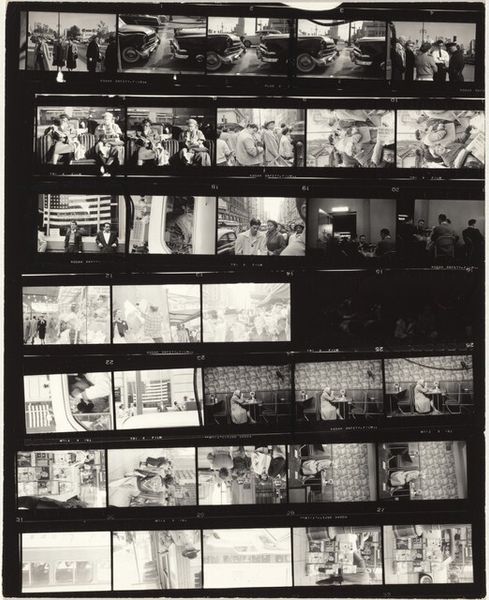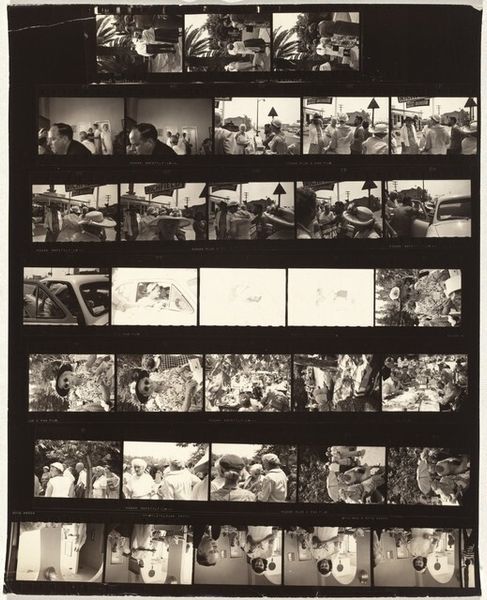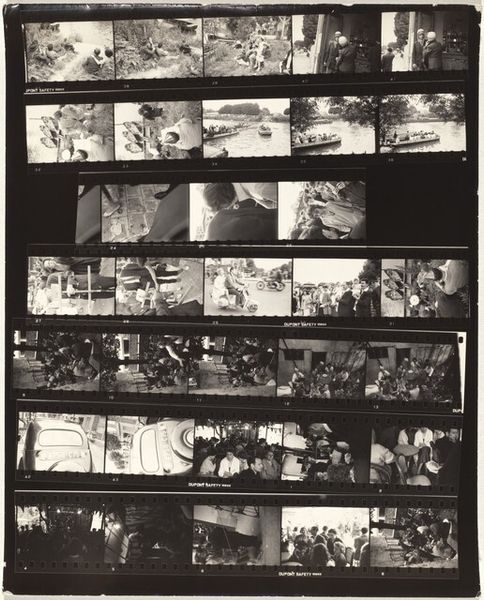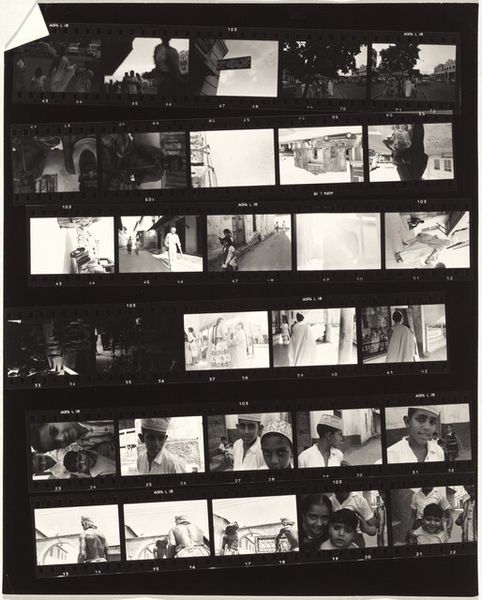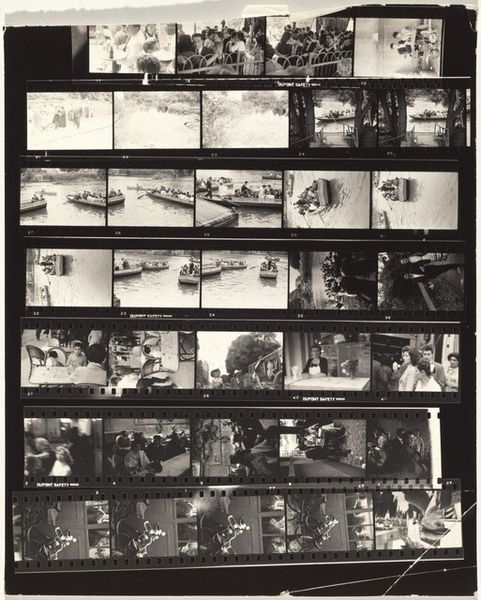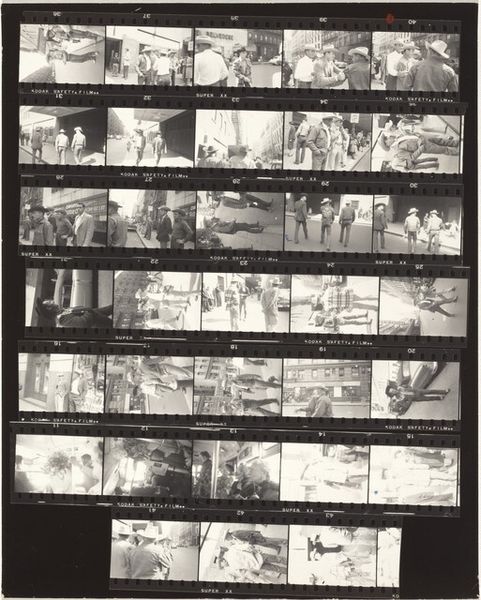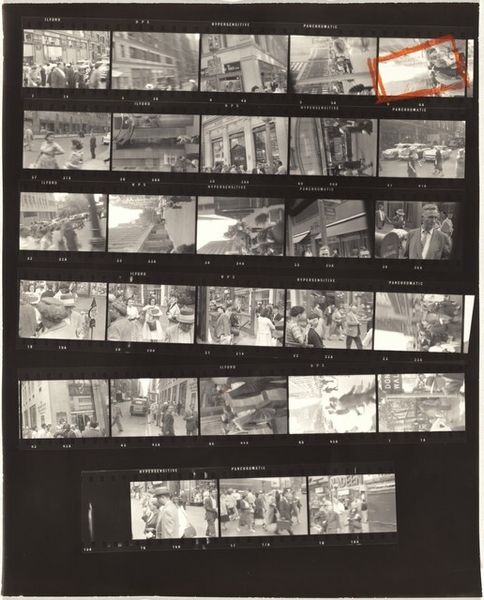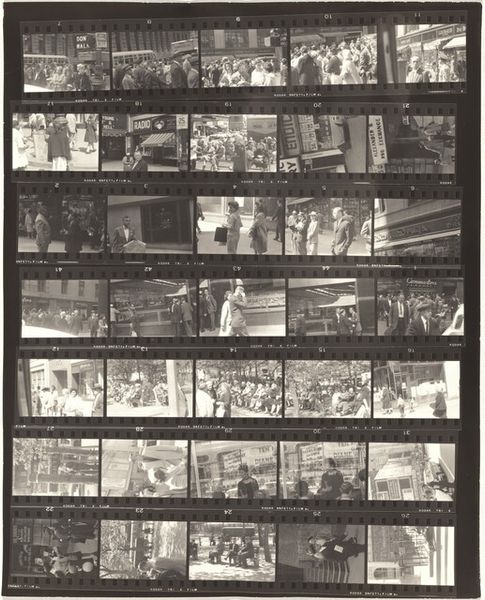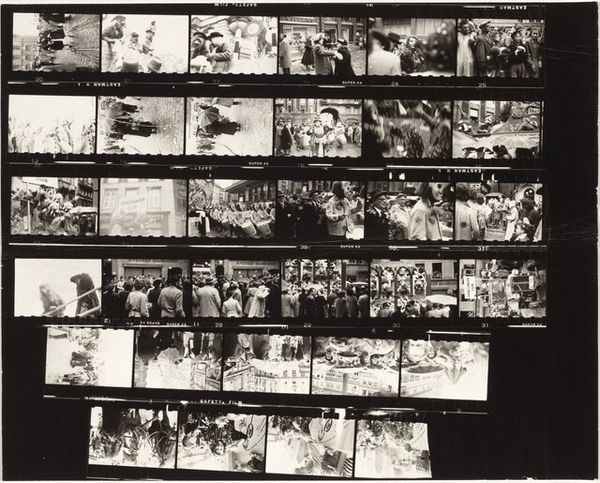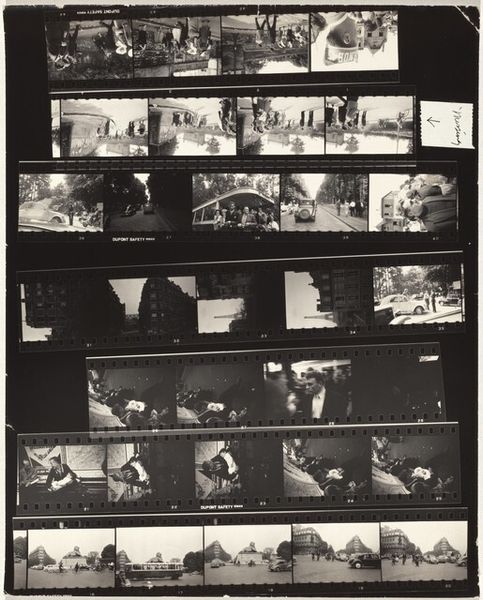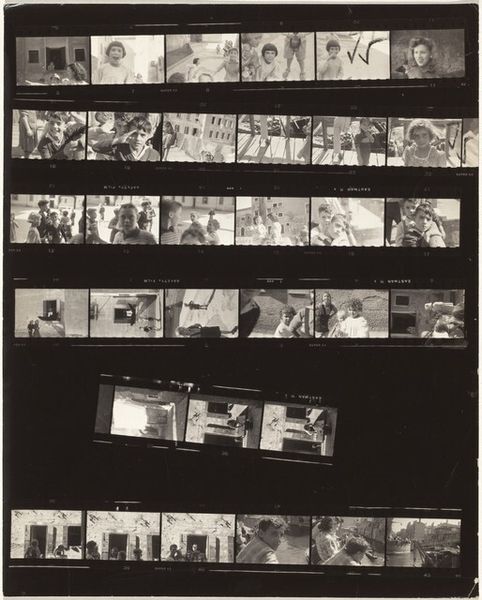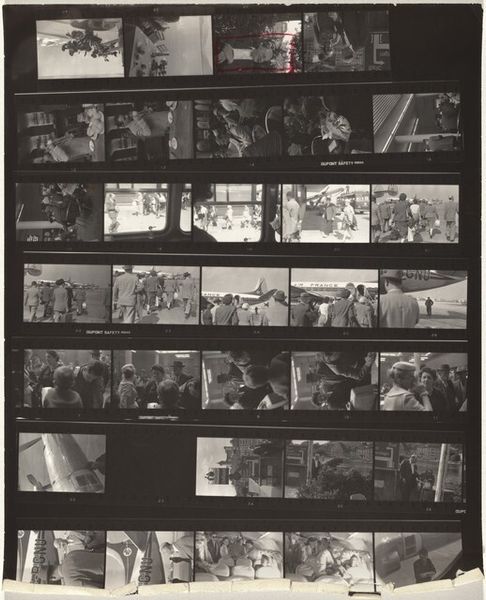
contact-print, photography, gelatin-silver-print
#
contact-print
#
street-photography
#
photography
#
gelatin-silver-print
#
monochrome photography
#
pop-art
#
realism
#
monochrome
Dimensions: overall: 25.2 x 20.2 cm (9 15/16 x 7 15/16 in.)
Copyright: National Gallery of Art: CC0 1.0
Curator: Immediately, I’m struck by the dense composition—all those small, grainy images crammed together. It's a contact sheet, but the effect is almost dizzying. Editor: Let’s delve into this fascinating piece. What we are viewing is Robert Frank's "Guggenheim 670--Reno, Nevada" from 1956, a gelatin-silver print and a compelling example of his groundbreaking work in American street photography. Frank challenged traditional photography conventions, offering raw glimpses into everyday life during a period of social and political upheaval. Curator: Exactly! And this format amplifies that sense of immediacy. We're not seeing polished, perfected images, but rather the artist’s working process laid bare. The sheer number of exposures screams exploration, a searching for the perfect shot… or maybe revealing the impossibility of one. The grit of the black and white tones adds to that feeling. Editor: These frames present fragmented glimpses into a consumerist culture, and perhaps a critique of its underbelly. Look at the central frames of the grid; rows upon rows of products, mirrored views of city streets that remind me of the blurred reality experienced by many Americans as they were being encouraged to relentlessly pursue the American Dream. His work frequently tackled themes of alienation and the stark realities often obscured by the dominant narrative of postwar prosperity. Curator: The stark contrasts he creates in these images is wonderful to decode, some frames barely registering information at all. This also forces a reading that suggests we look beneath the surface to the deeper and complex narratives of 1950’s society, specifically the unspoken racism and class divides he experienced as an outsider traveling across the US. Editor: Precisely, we are encouraged to ask ourselves whether these snapshots accurately reflected the human condition amidst rapid consumerism or offered an alternate version of progress itself? It remains an ever valid discourse today. Curator: Definitely. His use of seemingly casual composition adds another layer. It mirrors a sense of life as disjointed, of reality being filtered through different, and often unsettling perspectives. Editor: In conclusion, I think “Guggenheim 670” invites reflection upon our relationship with images, and their function as powerful agents of meaning, capable of subtly but significantly shifting perspectives and narratives. Curator: Agreed, it leaves me wondering about the stories behind these glimpses—the lives touched, the moments captured, and the overarching narrative woven by Frank’s unflinching eye.
Comments
No comments
Be the first to comment and join the conversation on the ultimate creative platform.
